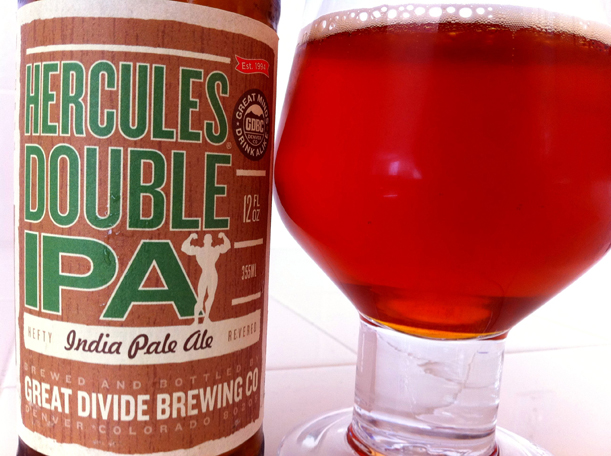What Caused the Death of American Brewing?
American breweries are back on the rise, after a near century long decline almost spelled their doom
American craft beer, an industry on the rise, faced near-extinction a few decades ago. Photo by Flickr user John Holzer.
In 1905, John Schneider sat down, put pen to paper, and began writing an account of his life. Elderly, his wiry white beard and mustache framing a face marked with deeply creased wrinkles, his memories came simply, matter-of-fact words and descriptions perhaps disguising how ill-at-ease the German immigrant felt with his adopted language. “We were 250 brewers in and founded the Gambrinus Support Association and demanded 30 dollars per month, which the bosses didn’t agree to, and we went on strike,” he wrote. “Business was good; left Eichenlaube. Went to Moerlein’s Brewery, only there was another strike, so I left soon and went to Herancourt’s Brewery, from there to the Jackson Brewery as maltser and got 3 dollars more wage here.” His words reveal the success of his chosen industry; breweries were plentiful, and Schneider had innumerable options for work. The year was 1854, and Schneider, who would become a brewmaster before long, found himself on the ground-level of the American brewing boom, a business that would peak in 1873 with over 3,700 independent breweries operating in the United States.
140 years later, the American brewing industry is back on the rise, thanks in large part to the reinvigorated appeal — and economic success — of small batch craft breweries. In their midyear report — released this week — the Brewers Association announced strong financial growth for American breweries, dollars backed by the number of breweries operating: 2,538, the largest number since 1873. What sounded the death knell for the brewing boom, and why did it take nearly a century and a half for American brewing to reclaim its former glory? The death of the American brewery can be attributed — at least in part — to the heartbreak of loving something too much: when beer became popular, it became profitable, opening itself up to large-scale corporate control and consolidation.
Before 1810, production statistics for beer are widely unavailable, speaking to its lack of standing in the American beverage rotation. Toward the mid-1850s, however, a number of social and technological advancements made beer an appealing option for drinkers. For one, an influx of immigrants from Britain, Germany and Ireland contributed to the idea of a beer-drinking culture. Additionally, wages were on the rise, affording workers the economic means to knock back a cold one after work. Substantive improvements in technology — such as refrigeration and pasteurization — also contributed to beer becoming more widely available. In 1865, per capita consumption of beer in the United States was 3.4 gallons — by the end of the 19th century, that number had nearly quadrupled.
Up through 1873, most of America’s beer came from small, locally owned and operated breweries. While craft breweries of today are concerned with creating a breadth of creative beer styles (see the Rogue Brewery’s Bacon Maple Ale, a beer inspired by Portland, Oregon’s famous Voodoo Doughnut shop), small batch breweries of the 19th century were more concerned with distributing quality beer to their immediate, local clientele. “Today, America’s craft brewers are creating innovative, high quality beer in a variety of styles and flavors,” explains Paul Gatza, director of the Brewers Association. “But, for a good part of the 20th century, it was hard to find many examples of ales in the U.S.” Lighter styles like lagers and pilsners began to squeeze heavier ales out of the market, thanks in large part to the influx of German immigrants — like Schneider — who brought their country’s penchant for the pilsner to America.
As thirst for the malty beverage increased, a new dynamic pitted big business against small craftsmanship. In 1870, 3,286 breweries produced, on average, 2,009 barrels of beer per year. By 1915, only 1,345 breweries remained, but these were prodigious in their production, cranking out 44,461 barrels per year. “Brewery declines in the 1870s were related to refrigerated and iced rail cars allowing breweries to extend their reach, pushing consolidation and closure of small, local brewers,” says Gatza.
It wasn’t until after Prohibition, however, that these large scale “shipping breweries” began to truly outwit the smaller craft breweries — which, though outnumbered, had been able to sustain their business by supplying small batch brews to their immediate local markets. With the passing of the 21st amendment, a measure was put in place that banned brewers from owning bars or saloons, requiring a middleman to go between bar owners and beer manufactures. Such a step drove up cost for small breweries, making their model economically unfeasible. “After Prohibition, over 700 breweries opened, but consolidation of smaller brewers by larger brewers started quickly and continued to around 1980,” Gatza says. “The post-Prohibition low point was 89 breweries owned by 42 companies in the late-1970s.” A combination of factors began to make beer — especially craft beer — less appealing to the American public. Marketing campaigns effectively dictated that the industry center around pale lagers, and diet crazes proselytized the light beer above all. The bell was tolling for the American brewery: experts projected that by the 1980s, there would be five brewing companies left in the United States.
Dancing with extinction, the American tradition of craft brewing has undergone a rebirth in the past 30 years. “A book could be written on what is behind the renaissance,” Gatz explains. “In a nutshell, beer drinkers are far more educated about breweries and beer styles, and having great experiences with delicious beers.” From 89 to 2,538 in three decades might be more than a renaissance, however — we may be witnessing the second-coming of an American craft brewing boom.
Which isn’t to say that history is repeating itself–merely mirroring a pattern of expanding industry.
